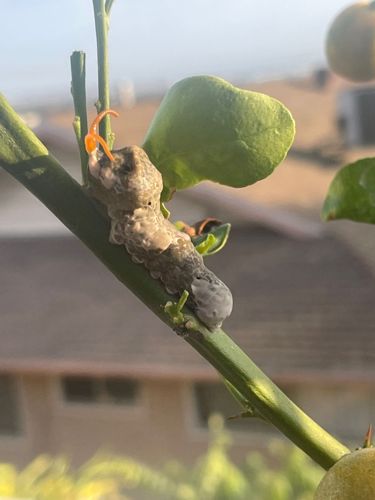Giant Swallowtail Caterpillar
Scientific Name: Papilio cresphontes
Order & Family: Lepidoptera, Papilionidae
Size: Larvae can reach up to 2.5 inches (6.3 cm) in length.

Natural Habitat
Found in citrus groves, woodlands, and gardens throughout North and South America, particularly where citrus trees and other host plants are abundant.
Diet & Feeding
The caterpillars are herbivores, primarily feeding on the leaves of citrus trees (e.g., orange, lemon, lime, grapefruit) and other plants in the family Rutaceae (e.g., prickly ash, gas plant).
Behavior Patterns
Early instar caterpillars resemble bird droppings, providing camouflage. Later instars, like the one pictured, are brown and white and continue to mimic bird droppings. When disturbed, they evert fleshy, orange, Y-shaped organs called osmeteria from behind their head, which release a foul-smelling substance to deter predators. They feed actively on host plant leaves before pupating. The adult butterflies are large and strong fliers.
Risks & Benefits
Potential risks often involve defoliation of citrus trees, making them a pest in commercial citrus operations and some home gardens. However, as adults, Giant Swallowtail butterflies are beneficial pollinators. The caterpillars themselves are an interesting example of mimicry and a food source for various insectivores.
Identified on: 9/14/2025